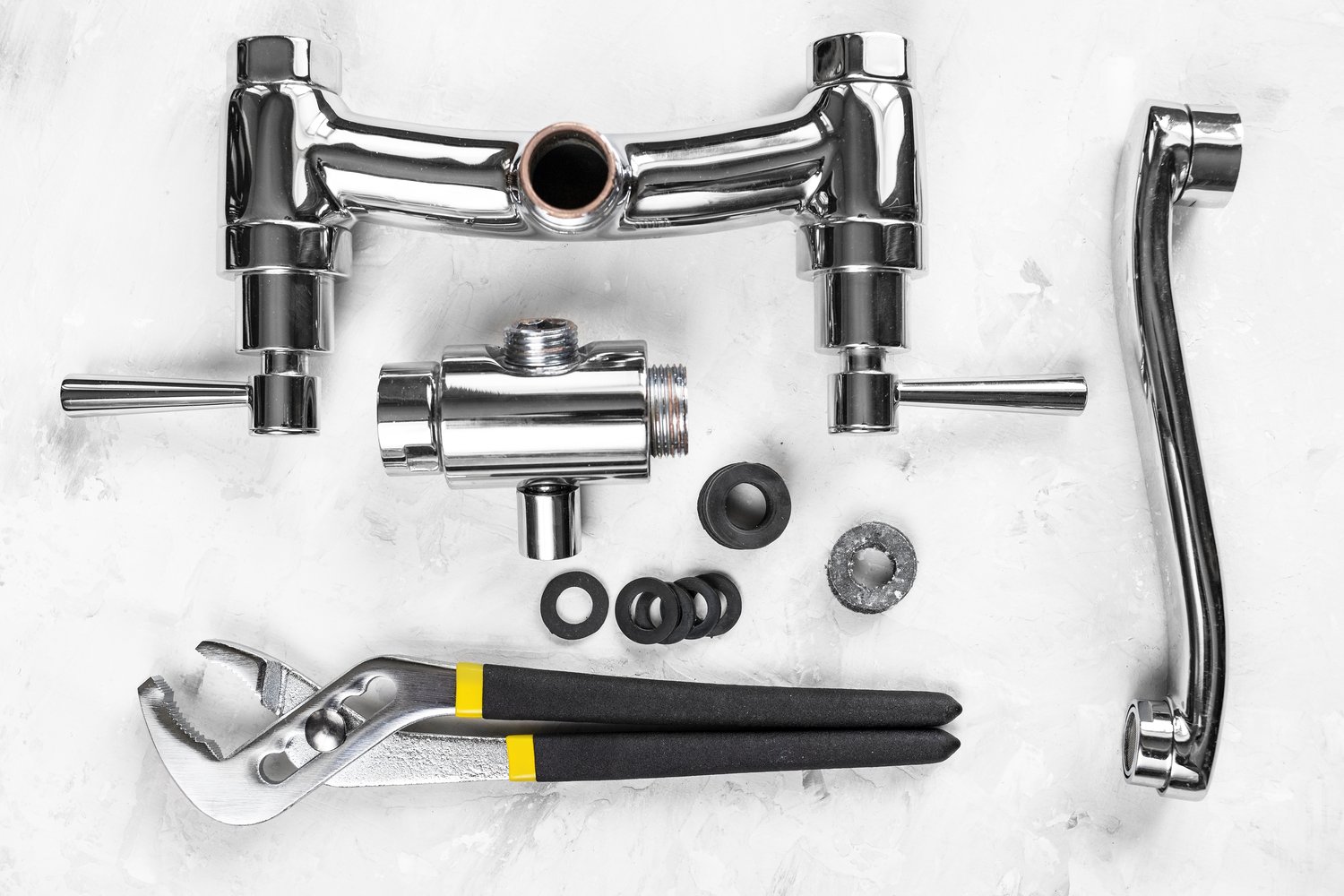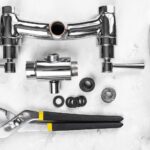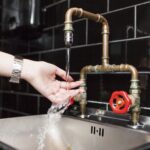Low water pressure can quickly turn everyday tasks like showering and dishwashing into tedious chores. Whether it’s a trickle instead of a stream, or a slow fill that tests your patience, understanding and addressing low water pressure is crucial for a comfortable home experience. This article dives into straightforward DIY solutions to refresh your home’s water flow, ensuring that those sparkling streams return to your taps.
- Discover how pinpointing the exact causes, such as clogged pipes or faulty fixtures, is the first step toward restoring optimal pressure.
- The guide walks you through checking for pipe blockages and leaks, providing hands-on methods to resolve common flow issues.
- Explore the benefits of upgrading your fixtures to high-flow models, a simple change with significant impacts on water pressure.
- Learn how adjusting your home’s pressure regulator can effectively boost water flow to the desired levels.
These insights will empower you to tackle those low water pressure dilemmas confidently, with solutions that vary from DIY fixes to recognizing when it’s time to call in the pros. Dive in and uncover practical tips that promise to enhance the water flow within your home.
Identifying the Root Causes: Understanding Why Water Pressure Too Low? 6 DIY Solutions to Boost Your Home’s Water Flow
Before jumping into solutions, it’s crucial to pinpoint the reasons behind low water pressure in your home. Causes of low water pressure can often be traced back to basic issues that might disrupt your daily routine. By understanding these potential problems, you can target the right DIY solutions to boost water flow efficiently and effectively.
One of the most common causes is clogged pipes. Over time, mineral deposits and debris can build up in your plumbing system, leading to restricted water flow. Similarly, faulty fixtures such as aging faucets and showerheads might obstruct the water, resulting in unsatisfactory pressure levels.
Additionally, you might find that pressure regulator issues are to blame. If your pressure regulator is not set correctly, it can prevent water from flowing freely throughout your plumbing system.
Another factor to consider is the possibility of leaks in the plumbing. Even small leaks can lead to a significant drop in water pressure, and they often go unnoticed until the issue becomes severe. By familiarizing yourself with these common causes, you will better understand how to tackle low water pressure effectively.
Checking for Pipe Blockages and Leaks
One of the first steps in troubleshooting low water pressure is to check for pipe blockages and leaks. These issues can lurk within your plumbing and cause a steady decline in water flow. Start by examining visible pipes for any signs of leaks or moisture, as these could indicate a more significant problem.
To identify blockages, consider the water pressure in different areas of your home. If the low pressure is isolated to one fixture, the issue might be localized, like a blocked faucet aerator. For more widespread problems, the blockage could be in a main water line.
For a thorough inspection, shut off your water supply and carefully remove fixtures to check for debris and mineral buildup. Clean or replace any clogged components to restore water flow.
If you suspect a leak, monitor water meter readings without using any water. A change indicates a potential leak, requiring quick action to prevent further water pressure loss. By addressing these aspects of your plumbing system, you can significantly improve your home’s low water pressure issue.
Upgrade Fixtures for Optimal Flow: Solutions for Water Pressure Too Low?
One effective way to combat low water pressure in your home is by upgrading to high-flow fixtures. Traditional showerheads and faucets might not be designed for optimal water efficiency, which can contribute to poor water flow.
Swapping out older showerheads and faucets with modern, high-flow models can provide a noticeable boost in water pressure. High-flow showerheads, for example, have been engineered to maximize water flow while maintaining water efficiency, ensuring a powerful shower experience without water wastage.
Similarly, kitchen and bathroom faucets equipped with aerators can be replaced. Aerators with a high flow rate can help improve the perceived water pressure by drawing in air and mixing it with the water stream, creating a more robust flow.
When selecting new fixtures, look for products that strike a balance between flow rate and water conservation. Many manufacturers now provide efficiency ratings, making it easier to choose fixtures that can result in significant improvements in pressure without increasing water bills substantially.
Adjusting the Pressure Regulator: Boosting Water Pressure Effectively
In some homes, the pressure regulator may need adjustment to optimize water pressure. The pressure regulator is typically located where the main water line enters the house. Its job is to regulate the water pressure coming from the public water supply.
To adjust the pressure regulator, first locate the valve, which usually has a bell-shaped device on the main pipe. Before making any changes, use a water pressure gauge to measure the current pressure at a faucet.
Carefully turn the screw on the regulator clockwise to increase pressure or counterclockwise to decrease it. Adjusting the regulator in small increments can help you find the ideal pressure without causing damage to your plumbing system.
Be sure to recheck the water pressure using the gauge after any adjustment to ensure the desired flow. Adjusting the pressure regulator can often provide a significant boost to the water flow, helping you resolve issues with low water pressure effectively.
When to Call a Professional for Persistently Low Water Pressure: Understanding Limits of 6 DIY Solutions to Boost Your Home’s Water Flow
While DIY solutions can significantly enhance your home’s water pressure, there are instances where professional expertise becomes essential. Recognizing these situations early can help prevent further complications and save costs in the long run.
If you’ve attempted to address common causes of low water pressure, such as clogged pipes or faulty fixtures, but see no improvement, it may indicate a deeper issue within your plumbing system. Complex problems like corroded pipes, significant leaks that aren’t visible, or issues with the main water line require professional assessment.
An unusually low water pressure confined to a single fixture might suggest a more localized problem. However, if you’re experiencing low pressure throughout your home after trying all typical DIY remedies, this can be a sign of a serious underlying issue. Potential culprits could include significant blockages in the main supply line or problems with a community water supply system.
Another instance warranting professional intervention is when adjusting the pressure regulator does not yield noticeable results. Pressure regulators can be intricate to handle without proper tools and experience, and improper adjustment could lead to damage elsewhere in your plumbing system.
Lastly, some homes particularly with older plumbing systems, may have undetected issues that require specialized diagnostic equipment to uncover. Professional plumbers use advanced tools and techniques to accurately identify and efficiently resolve these types of problems.
In summary, recognizing when to step back and enlist professional help is crucial for maintaining optimal water pressure. Professionals ensure that complex issues are handled with expertise, preventing potential damage and securing reliable water flow.
Frequently Asked Questions on Boosting Your Home’s Water Pressure
What common issues cause low water pressure?
Low water pressure can be caused by clogged pipes, faulty fixtures, or issues with the pressure regulator.
How can I check if my pipes are blocked?
Inspect pipes visually for deposits or leaks, and remove any visible obstructions.
Why should I upgrade my fixtures?
Upgrading to high-flow showerheads and faucets can immediately improve water pressure.
How do I find and adjust the pressure regulator?
Locate the regulator near your water meter and adjust it using a wrench for desired pressure.
When should I call a professional?
If fixes don’t resolve the problem, it could be due to complex plumbing issues needing expert help.





